|
Wednesday 10 January 2024
11th European Bat Detector Workshop organized in September
The last EBDW workshop was in Biddarai in 2018.
Due to interuption caused by the Covid-19 pandemic, the workshop was in Finland
was never carried out as planned. Now, with a physical European Bat Research
Conference in Catalonia during September 2024, we are announcing our plans for a
bat detector workshop.
The workshop will be held 6-10 of September at a
location within travel distance from the conference. NIFF and local bat workers
are cooperating to enable this traditional event to continue.
Details and pictures on the 11 EBDW is constantly
updated here.
Information on travel, local bat fauna and program will be presented as it
becomes available.
Information on earlier workshops (both the alpine
and the regular one) is available on
www.ebdw.eu. The picture to the
right is from the European Alpine Bat Detector Workshop in Askim (Norway) during
2019. Laura Torent, here building her own bat detector, is also one of the
organizers from Catalonia.
|
|

Photo: Leif Gjerde. |
|
Saturday 21 October 2023
3rd International Bat Research Online Symposium ▲
In 2021, Leibniz-IZW launched the symposium series
«International Bat Research Online Symposium»
(IBROS). The first online symposium of this series took place in November 2021
and addressed the conflict between bats and wind energy worldwide. The second
edition was held in January 2023 with a focus on commuting and migratory
movements of bats and the anthropogenic factors that influence these movements.
The next bat research online symposium will be held on 12th of March 2024 and
will focus on replacement roosts for bats at buildings.
This series of events is aimed at scientists,
experts as well as representatives of authorities and non-governmental
organizations.
The symposium is this time sponsured, and thus
for free for all the participants. The lectures awill probably be available for
the participants to view for a limited time after the symposium. So if you are
working with on bats and roosts, you have no exuse not to join!
More information is available on Leibniz-IZW's
web page.
|
|

|
|
Saturday 14 October 2023
16th EBRS located to Tarragona in Catalonia September 2024 ▲
Finally the plans for the
next European Bat Research Symposium has been launched by the BiBio Research
Group (Natural Sciences Museum of Granollers) and Rovira i Virgili University.
The organizing committee consists of 13 well experienced bat workers.
The symposium will be held on 2-6 of September in
the Catalonian city of Tarragona. The city is also known as a World Heritage
Site as this was where the Roman city of Tarraco was located.
The
symposium web-page was recently launched. More information on current and
previous EBRS can be viewed on
www.ebrs.date.
At the same time NIFF is working on
the dates and location of the next European Bat Detector Workshop, which
traditionally has been organized just before or after the conference. Updates on
the workshop will be included on
www.ebdw.eu.
|
|

|
|
Thursday 21 September 2023
CWW conference present bat research and mitigation ▲
During the fourth day of the conference week, a majority of the talks are
devoted to bat research and mitigation. With the high number of presentations,
the conference is holding to parallel sessions of talks. One of these are
devoted to bats.
The keynote speech is by Christian Voigt from the Leibniz
Institute in Eastern Berlin, covering «Towards solving the global wind
energy-bat conflict: Current state and future perspectives». The second
keynote speech is on bat populations in the Dominican Republic.
The highlights from these
and other
talks will be included
in the next number of Fennoscandian Bats.
|
|

Christian Voigt at the International Berlin Bat Meeting. Photo: Leif
Yngve Gjerde. |
|
Wednesday 20 September 2023
CWW with good international bat coverage, also outside Europe ▲
Going
through the program and abstract book from the 7th CWW, it becomes apparent the
high number of bat related talks and posters. At least 117 talks and 82 posters
were scheduled when all topics were included, in which 106 talks were limited to
12 minutes. The number of bat related presentations were the highest of the
seven CWW conferences, sharing the record of 34 with the Vindval conference in
Stockholm 2013.
Generally the presentations represent projects and research
in countries with relatively good economy, stricter national wildlife laws and
institutions in which to implement the EIA and mitigation work. This was also
true for the 7th CWW, as Europe, USA and partly Australia were well represented.
However, there was more focus on old world fruit bats this time. Also bat
projects from countries such as Tunisia, Taiwan and the Dominican Republic, were
presented.
A
review of the conference will be included in the next number of Fennoscandian
Bats.
|
|

Photo: Leif Yngve Gjerde. |
|
Tuesday 19 September 2023
CWW with over 500 participants ▲
Today
the 7th Conference on Wind Energy and Wildlife impacts was launched as the event
was opened by the organizers. The conference itself is a 3-day event, but
include pre-conference workshops and field trips, stretching it to five days.
It is always interesting to assess the conference impact and
importance for the target groups. According to the organizers over 500
participants from some 30 countries have registered,
from whom almost 200 presentations and posters have
been included.
When
details on participants become available, it will be possible to analyze the CWW
impact, as we then know what countries, companies, research institutions and
NGO's were represented. The full assessment on the CWW impact will be included
in the next number of Fennoscandian Bats.
|
|

Presentation from the 2nd CWW in Stockholm during 2013. Photo: Leif Yngve
Gjerde. |
|
Saturday 16 September 2023
7th
Conference on Wind energy and Wildlife impacts opens
in Croatia (CWW) ▲
Every two years the wind industry and their allies
organize a conference on wind energy and wildlife impacts.
The first conference was organized in Norway during 2011.
This year the conference is located to the
Croation town of Šibenic. Organizers are the
Institute for Applied Ecology (Oikon Ltd.) and
Supernatural Ltd. They have hired in an agency who manages the practical
aspects of the conference.
The five-day conference is open from Monday 18th
through Friday 22nd of September. NIFF will follow the conference closely,
reporting on events and information connected to this gathering. A full review
of the conference will also follow in our international newsletter
Fennoscandian Bats and NIFF's Scandinavian membership magazine
Gudnjoloddi.
Newsclipps will follow here during the conference,
and scientific results will be revieled in our newsclips during the next months.
|
|

|
|
Thursday 13 April 2023
20th International Bat Research Conference ▲
During the 19th International
Bat Research Conference (IBRC) in Austin (Texas, U.S.A.) it was decided to
organize the next conference in Australia during 2025.
The first IBRC was organized during 1968 in
Czechoslovakia.
Since this conference has been held 19 times, rotating between countries and
continents. Since the conference has been organized every three years (with four
exceptions). The 8th EBRC was organized in Australia during 1989
The conference will be organized in Cairns during
August 2025, 36 years after last (and only) time the conference was located to
Australia. The organizers for the upcomming event are
the Australasian Bat Society (ABS) and
the Pacific Bat Conservation Network (PacBat).
|
|

Picture shows the poster session at the 15th
IBRC in Praha 2010. Photo: Leif Yngve Gjerde. |
|
Saturday 1 April 2023
British bat enthusiast Tony Hutson passed away ▲
British bat enthusiast
and veteran died on 16th February at an age of around 79 years (born 1944).
Anthony Michael Hutson played a central role in
British and European bat politics. He was one of the founders of the British
Bat Conservation Trust and edited its newsletter Bat News for a
number of years. He was also a member of the IUCN's Species Specialist Group
on bats, and one of the engineers to the European Bats Agreement.
You can read his obituary on the British Bat
Conservation Trust
web page.
|
|

Photo: Leif Yngve Gjerde. |
|
Saturday 18 February 2023
Unusual winter mating activity by the Parti-colored Bat ▲
In 1994 Leif Gjerde started to study the Party-colored Bat's distribution in Skandinavia
during the mating season. All the coastal towns from Halden to Stavanger were
mapped, in addition to a number of Swedish and Danish towns. Since our
knowledge on the species' fall activity has increased significantly. However,
our knowledge of winter and spring activity is limited.
The mating season of the Parti-colored Bat starts in September and lasts
till December. It is the weather conditions that limit the activity towards the
end of the season. So mating calls may occationally be heard during winter or
spring if the conditions are favorable. Bengt Edqvist had a passive detector
deployed at the Swedish village Taberg in Småland this winter. He recorded
advertisment calling males during 10.-12. Januar and 11. to 13. February.
The book
Social Calls of the Bats of Britain and Ireland was published in its
second edition last year. It includes updated knowledge which has been aquired
by Gjerde, mostly from the township of Romsås in Oslo. If you wish to learn more
about the
Parti-colored bat or the project at
Romsås in Oslo, you can browse their web-pages.
|
|

Photo: Leif Yngve Gjerde. |
|
Saturday 28 January 2023
The IBROS
Conference provide new knowledge on bat migration ▲
Just recently
Christian C. Voigt
and his staff from the
Leibniz Institute
of Zoo and Wildlife Research organized the
2nd
International Bat Research Online Symposium.
The symposium was organized during 24th and 25th of February, and was focused on
daily and seasonal movements in bats. Around
250
people from
34
countries participated in the webinar which
presented a number of lectures and posters during the two day event. A book of
abstracts has been produced.
A review of the symposium will be
included in the next number of
Fennoscandian Bats.
|
|

Photo: Leif Yngve Gjerde. |
|
Saturday
10 December 2022
New book for inspiration published by Fenton and Rydell ▲
A new handbook on
bat ecology is soon available from Pelagic Publishing. The book has been under
production for a while, but will be available next year. The Exetor based
publisher is launching the book
«A miscellany of bats»,
on behalf of Fenton and the late Swedish scientist Rydell.
Melville Brock
Fenton is an honorary professor at the Univerity of Waterloo in Ontario, Canada.
Jens Rydell was a scientist and photographer working for the University of Lund
in Scania (Skåne, Sweden). Both authors have a PhD on bats, and devoted their
lives to bat science and conservation.
The book has now
been printed, and will be available from 10. January next year. The cost will be
30 pounds. The book has ISBN number 978-1-78427-294-4.
We have received a copy from the publisher, and a
book review will be presented in the next issue of Fennoscandian Bats.
|
|
 |
|
Saturday
15 October 2022
New Arctic Bat
Species ▲
On 3rd of October a Brown
Noctule (Nyctalus noctula) was observed in the vicinity of Målselv river
(69°N) in Inner Troms (Norway). It was
discovered hanging on the wheel of a wheel barrel by the owner Laila Solberg.
Four days later it was checked by a bat scientist from the University of Troms.
It was then dead. How long the bat had been dead, and when it first appeared is
unknown.
This region of Norway has a small population of
the Northern Bat, and together with the Pasvik area, are the northern most
populations of bats in the world.
The Noctule is known as a long-distance migrant.
The northernmost population in Norway exist around Kongsvinger 60°
north. However, individuals have been found as far north as Tynset (62°N). The
first and only record of this species, in which it was inspected alive, was done
on Finnøy near Stavanger in Southwestern Norway.
More information on the Arctic find will be
included in the next number of Fennoscandian Bats.
|
|

Noctule Bat. Photo: François Schwaab. |
|
Saturday 17 September 2022
Zero Crossing is
still superior to Full Spectrum ▲
The
Australian firm Titley Scientific and Chris Corben developed during the
beginning of the 2000’s a passive detector for monitoring bat activity by
recording their calls. At that time battery power and SD card storage capacity
was a significant limitation, thus a huge problem
for bat researcher.
It reduced the length of each deployment
significantly.
To overcome this problem
Corben developed
a detector sampling in
Zero Crossing (ZC), which in essences require no storage space
accompanied by low battery consumption.
However, most European scientists have generally not accepted Zero Crossing
as a competent identification tool for bats. During recent years newer detector
models have included both Full Spectrum and Zero Crossing, to
enable selling it to the entire global market. But the tendency is that Zero
Crossing might be faced out over time.
During fieldwork carrying out Environmental Impact Assessments at two wind
turbine projects in Denmark, it became evident that Zero Crossing still
is superior to Full Spectrum when monitoring bats over longer periods.
Already after the third night (30 hours of operation) the SD cards were full.
This suggest
that ZC will be superior to FS for many years to come. Furthermore, Zero
Crossing is the underlying technology used when automated identification
software, such as Wildlife Acoustics’ Kaleidoscope, is used.
|
|

Chris Corben is the creator of Zero Crossing. Photo: Leif Yngve Gjerde. |
|
Saturday 10 September 2022
Mating season for the Parti-colored Bat has started ▲
This species forage above lakes during summer, and migrate to nearby cities
during fall where it mates and hibernate. During the mating season it performs
its display flight with a sound audible to most people below 55 in age. Tall
buildings are chosen, typically apartment buildings of 9 stories or more.
However, industrial buildings, silos, churches, quarries or even natural cliffs
may be selected if they are tall enough.
The stronghold of the species lie in southern Scandinavia (south of
Oslo-Stockholm), which include Aarhus and Copenhagen. It is also commonly found
in northern Germany. In the rest of Europe it seems to have a patchy
distribution. However, the species absence probably reflects the lack of bat
workers surveying this species during the fall months, rather then its actual
distribution.
The season starts in September and lasts till Christmas if the weather permits.
Their display flight may still be observed during 0ºC and with landscape covered
in snow! It is found as far south as Slovenia and Switzerland, and fall records
of migratory individuals has been made in the Pyrenees. During recent years it
has been reported annually from bat hospitals in the south of England.
We wish tips of any European observations made during the fall or winter, For more
information about this species and its fall activities may be viewed at
batlife.info.
|
|

The Parti-colored Bat. Photo: Leif Yngve Gjerde.. |
|
Saturday 20 August 2022
Social Calls of the Bats of Britain published in new edition ▲
The second edition of
this book was published by Pelagic Publishing this summer. It is a quite
extended and updated version of the first edition which was published eight
years ago. This 301 page book, written by Neil Middleton, Andrew Froud and Keith
French, describe the social calls of 23 bat species both resident and vagrant to
Britain and Ireland. In reality this covers most species in Central and Northern
Europe. The book has up-to-date
information with 280 figures and 61 tables. A supplementary sound library is
included, where calls illustrated in the text may be downloaded from a sound
library on the www.
NIFF has contributed considerably to the book, especially when concerning the
Northern Bat and the Parti-colored Bat.
The book is a must for any bat worker working with bat sound. A full review will
be available in the December number of Fennoscandian Bats.
|
|
 |
|
Saturday 13 August 2022
Albino bat found in
Switzerland
▲
Color mutations may occur
in wild animals from time to time. Albinism
is the most known form, and may occure regardless of the species' normal color.
Of the around 1.400 bat species registered on Earth, albinism has been found in
around 40 species.
Recently it was
reported of an albino bat at the bat hospital at the Zoological Garden of Zürich
in Switzerland. It was a juvenile pipistrell which was registered on the 12th of
July. The bat was first reeived by ParkVets in the Swiss town Goldau.
Source: Bat-News 07/2022,
Newsletter from Stiftung Fledermausschutz
|
|

A colony of Actophylla alba
photographed
in Tortuguero National Park, Costa Rica. Photographers
pseudonym: Leyo. Source: Wikipedia. |
|
Saturday 23 July 2022
Greater Mouse-eared Bat
expanding range in Sweden
▲
The Greater Nouse-eared Bat
was first time recorded in Sweden during February 1985. It was found at a
hibernation site in
Fyledalen in Scania (Skåne) by Rune Gerell and
Karin G. Lundberg. This species has never been found in Denmark or Finland.
Furthermore, it has not been recorded from the former Danish areas of northern
Germany.
However, now the species seem to reveal itself from several localities in
southern Sweden. Annual observations, also at new localities, have been
registered since
2014, which indicate
the species might be expanding its range. If the expansion is actual, or just a
result of increased fieldwork, remains to be seen. Regardless, this species seem
to have a permenent population in Skåne and the nearby areas, in which it has
been found around 60 times.
|
|
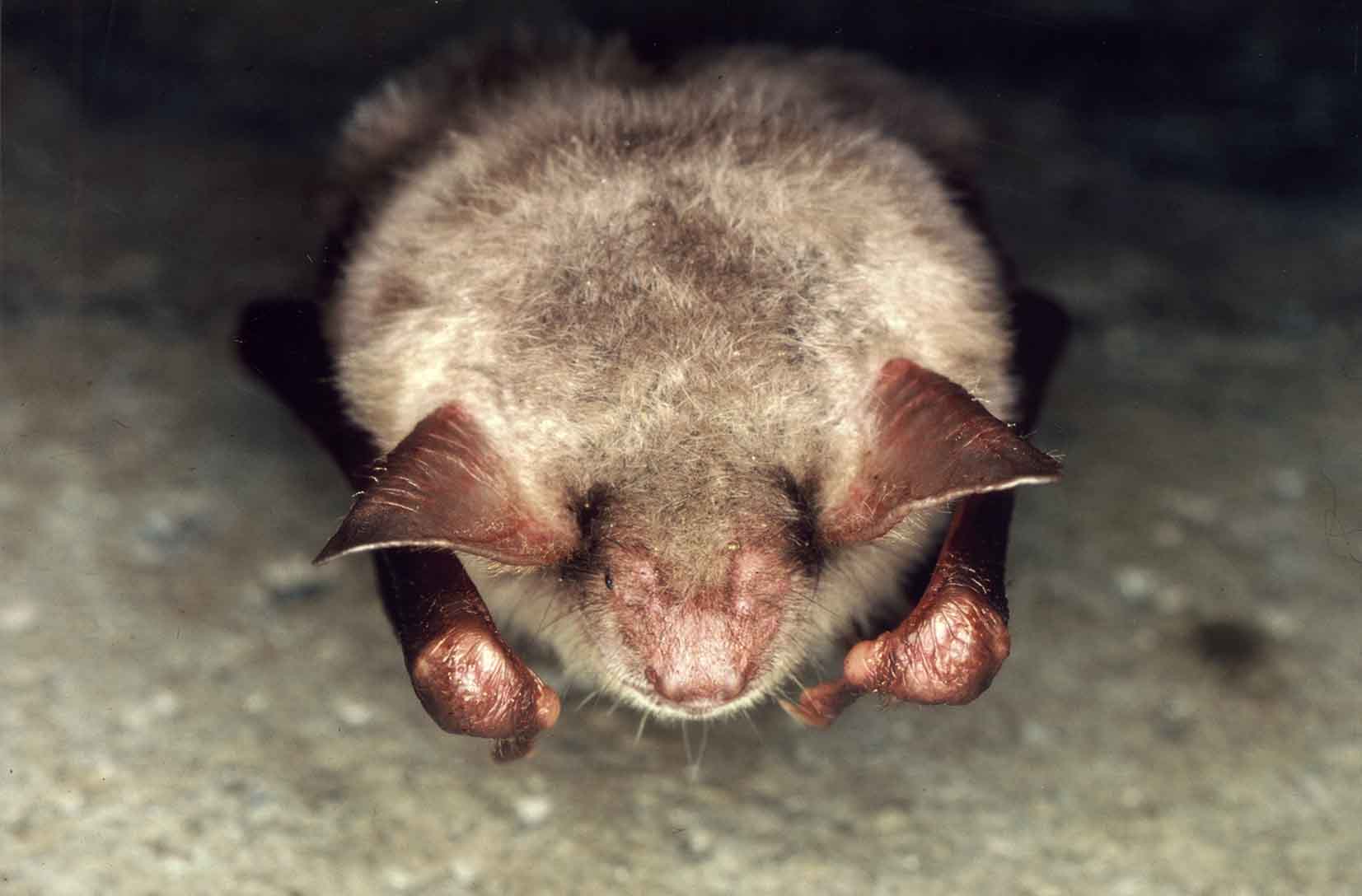
Stormusøre (Myotis myotis). Photo: François Schwaab. |
|
Saturday 25 June 2022
Nathusius Pipistrelle flew from Russia to Lake Geneva in 63 days▲
The Natusius Pipistrell
is known for migrating long distances in Europe.
It crosses the North Sea between Scandinavia and Scotland, but also between
Estonia and the Netherlands.
Little is known about how it chooses its migration route.
But it
is most natural if
they
follow landscape elements such as coastlines and rivers.
This species is considered the longest-migrating species in Europe, and there
are constant reports of
ringed
individuals
being found after long distances.
In April, a Russian article was published in which a
Nathusius
Pipistrell,
which had been
ringed
in Borok in northwestern Russia, was recovered in the village of Lully on the
French side of Lake Geneva.
It had then covered a distance of 2,486 km, assuming it flew in a straight line.
One must, however, assume that it has followed the landscape, which probably
resulted
in a flight distance of over 3,000 km!
This
record
is probably a world record for long-flying bats.
The bat that was
recovered
was a one-year-old female that was
ringed
on 25 July 2009. It was recovered on 26 September of the same year.
By then only 63 days had passed.
So the bat must have flown 40-50
kilometers
every night.
|
|
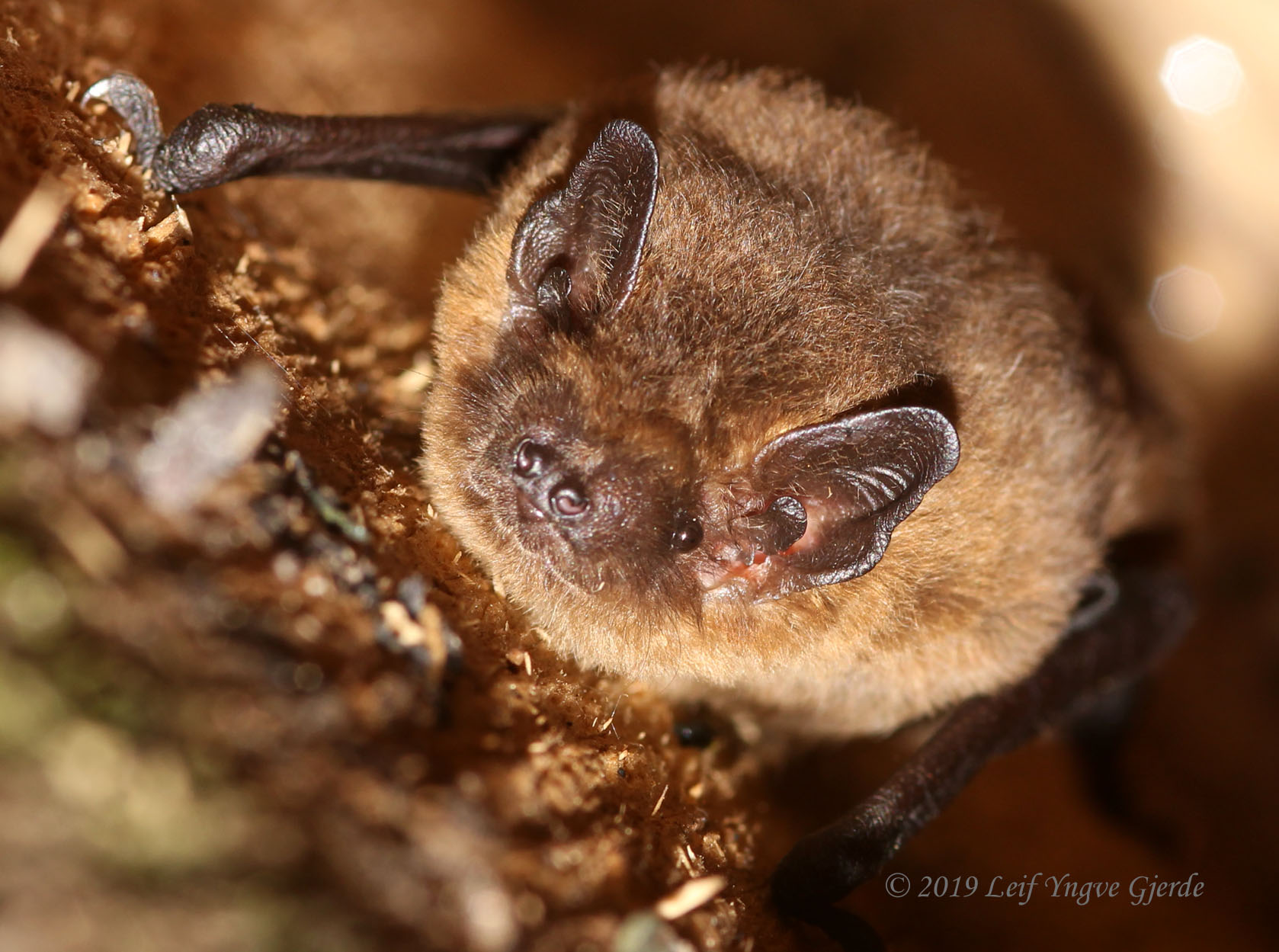
A Nathusius Pipistrelle found between Norway and Scotland. Photo:
Leif Yngve Gjerde. |
|
Wednesday 22 June 2022
2nd IBROS to
be organized in January 2023
▲
Christian Voigt and Josepha Prügel from the
Leibniz Institute for Zoo and Wildlife Research
announced earlier today that they will be organizing the 2nd International
Bat Research Online Symposium on 24. and 25. of January next year. The
symposium is organized together with the Eurobats Secretariat, and has
got the title Daily and seasonal movements of bats.
Deadline for abstracts is set to 16th of October. Registration and abstract
submission, together with a preliminary programme will eventually be available
on their
web-page.
|
|
 |
|
Saturday 11 June 2022
New bat book launched by Pelagic Publishing
▲
On
26th of July the Exetor based British firm Pelagic Publishing are
planning to lauch their book «A
miscellany of bats»,
published by Fenton and Rydell.
Melville Brock Fenton is an honorary professor at the University of Waterloo in
Ontario, Canada. Jens Rydell was a bat researcher and photographer at Lund
University in Sweden. The authors have both a PhD on bats, with a lifelong
dedication to bat research.
For the time being
Pelagic shares little information of their new book.
It is suppose to cover all aspects of bat biodiversity, ecology and their
natural history.
The book is schedualed to be launched on 26th of
July, with a cost of UKP 30. It will be available in paperback. However, number
of pages and format has not yet been released. The ISBN number is
978-1-78427-294-4.
|
|
 |
|
Saturday 28 May 2022
All reports on bats in
Scandinavian
municipalities is now being
registered ▲
NIFF is now
collecting
all reports registered
in public offices and
administration,
in which they have
requested survey work.
Such
surveys could be the result of an Environmental Impact
Assessment
triggered by the Planning and Building Act, or
in force of their obligation to have knowledge of their local bat fauna in
public planning and management.
The reports are to be included in our bibliography on bat literature in
Scandinavia, but are also an important source of the animals' distribution and
occurrence.
Furthermore, we will also investigate whether the Nature
Diversity Act
(Naturmangfoldloven),
the Environmental Information Act and the Planning and Building Act are being
followed up in the municipalities.
All the 356 municipalities in Norway, 290 in
Sweden and 98 in Denmark are included in the survey.
|
|
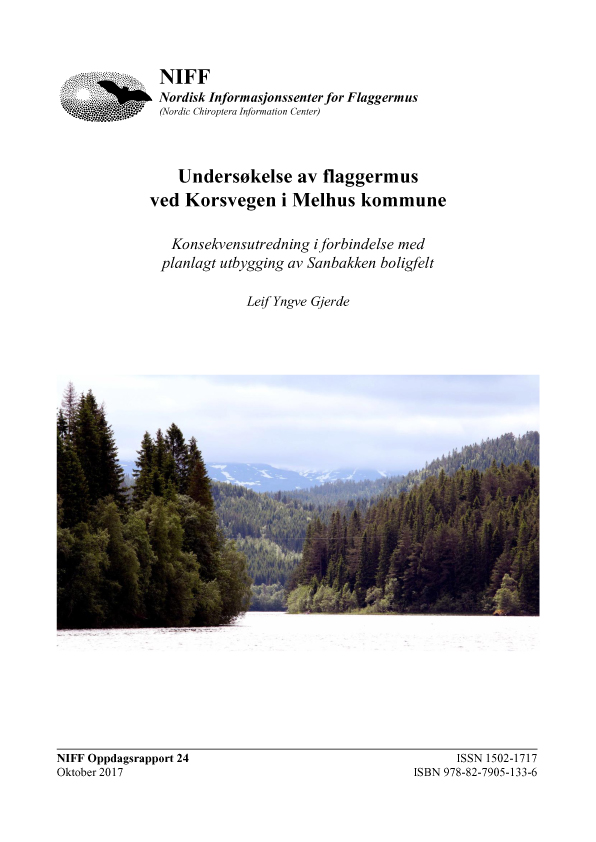 |
|
Saturday 30 April 2022
Migrating bats tolerate higher wind speeds
▲
A Dutch study showed that
the
Nathusius's Pipistrelle
P. nathusii is more tolerant of stronger winds than
the Banded Pipistrelle
P. pipistrellus.
This was especially true during
fall
migration when there was wind from the east or northeast.
The
Banded Pipistrelle
showed no favoritism of this wind direction.
The results show that observations around the wind
turbines' rotors during higher wind speeds
concern migrating
Nathusius's Pipistrelles,
and that there are large differences in wind tolerance between
migratory
and stationary individuals.
Source: Boonman, Martijn;
Roland Vliet & Astrid Potiek.
Bat activity in windfarms during high wind speed: is migration a contributing
factor?
Book of abstracts of oral and poster presentations of the 6th Conference on wind
energy and wildlife impacts.
125 pages.
No ISBN.
|
|

A pipistrelle during flight.
Photo: Francois Schwaab. |
|
Saturday 16 April 2022
6th Conference on Wind energy and Wildlife Impacts
ended successfully
▲
Last week the
6th Conference on Wind energy and Wildlife Impacts (CWW)
was ended after a five day conference.
This conference is organized every two years, and this time the Netherlands had
the honor. The conference focus on wildlife threatened by wind turbine
activities. Birds and bats are especially vulnerable, but also other wild life
such as Reindeer.
During more recent years off-shore wind turbines have received increased
attention. For instance the industry might influence spawning areas for Atlantic
Cod.
A review of the
conference will be presented in the next issue of Fennoscandian Bats.
|
|

|
|
Saturday 9 April 2022
Mines are important for detecting
rare bat species
▲
Caves and
mines are used by many bat species as
hibernation
sites.
They choose cool and frost-free locations with high humidity when they
start to hibernate
during
late
fall.
They
hibernate
for several months until March
or
April.
In Southern and Central Europe we find in many caves and mines thousands of
overwintering bats.
We also find such mines in Denmark (Mønsted, Daugbjerg and Thingbæk).
But in Norway, Sweden and Finland the numbers are quite small, where a few dozen
animals are considered many.
Nevertheless, these mines are important.
Not for bats, but for bat researchers.
Some
species
are difficult to detect
during summer using
traditional methods such as bat detectors or capture techniques,
but may during
winter easily
be discovered as
the animals are dormant and can easily be observed up close.
Examples of such
discoveries is the Bechstein's Bat in Scania (Skåne)
and the Barbastelle
in Vestfold.
|
|

The Barbastell was rediscovered during March 2004 in Norway, as it was
recorded from a water tunnel.
Photo: Leif Yngve Gjerde.
|
|
Saturday 26 March 2022
Swedish wind turbine firm Vattenfall plan expantion in North Sea
▲
In Norway, Vattenfall and the Norwegian company
Seagust have formed a joint venture.
Via the joint venture, the companies will offer licenses in the areas Utsira
Nord and Sørlige Nordsjø II in the North Sea.
The Norwegian government has previously announced that it plans to build new
wind power with a capacity of up to 4.5 GW, consisting of both floating and
bottom-mounted wind turbines.
The licensing process is expected to continue in 2022.
|
|
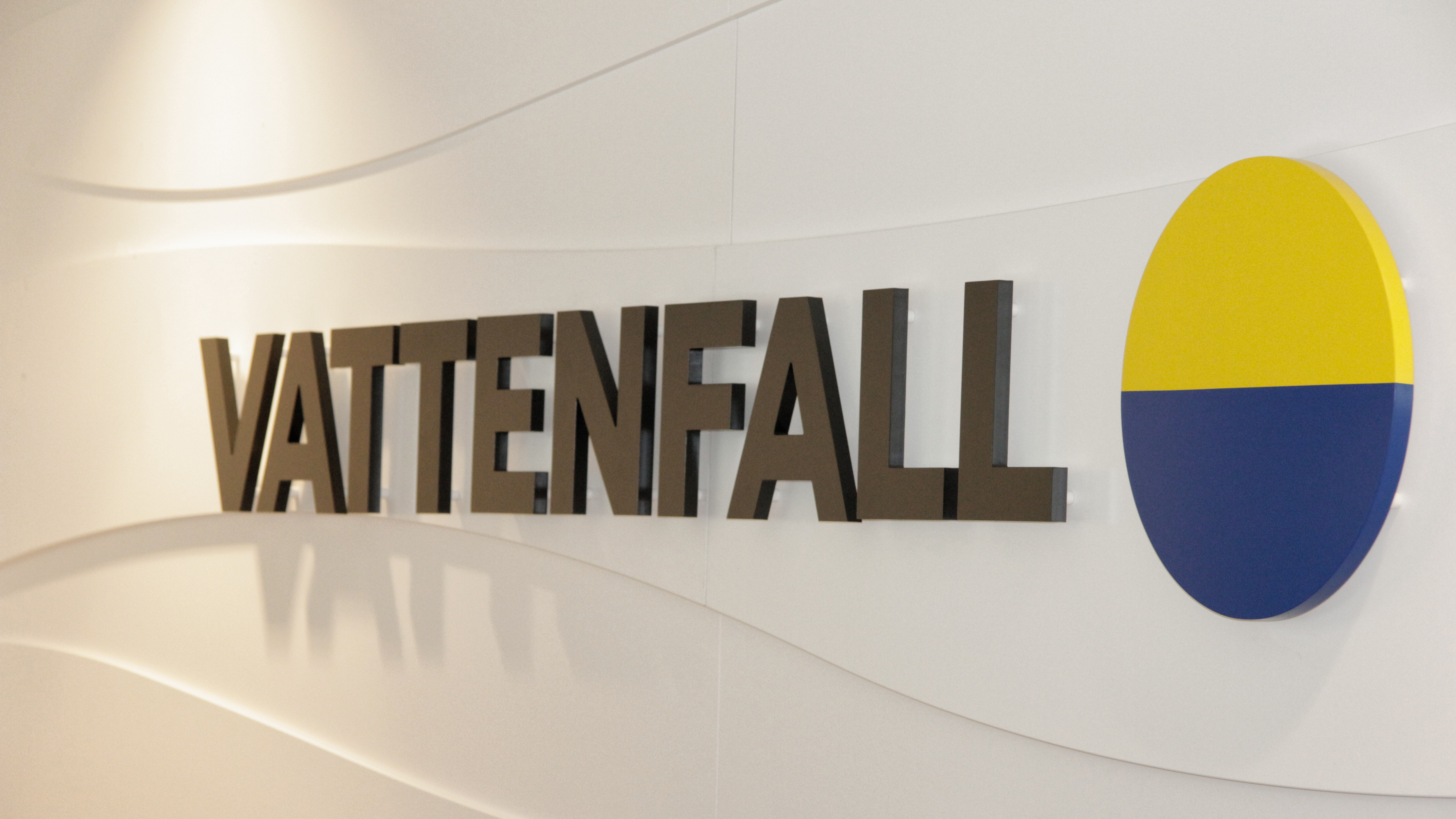
|
|
Saturday 26 Februar 2022
6th CWW conference in Netherlands
goes as planned
▲
The
first CWW meeting was organized in Trondhjem during May 2011, followed by the
Vindval conference in Stockholm during February 2013. NIFF participated
at both conferences. Since, it has been organized every two
years, hosted in Berlin, Lisbon and Stirling.
The 6th
Conference on Wind energy and Wildlife impacts (CWW) will be organized by Bureau
Waardenburg Ecology & Landscape. It was
postponed
from last year due to the Covid-19 pandemic. It is scheduled to go forward as
planned in Egmond aan Zee in the Netherlands during 4. - 8.
April.
|
|
 |
|
Saturday 19 Februar 2022
The Norwegian Government investing in North Sea
offshore wind turbines
▲
On 9 February, the Norwegian Prime Minister Jonas Gahr Støre presented the plan
to expand the Southern North Sea II with floating wind turbines.
The first phase of the Southern North Sea II will be 1500 megawatts.
This corresponds to the consumption of 460,000 households.
Expensive solutions with transport of energy lead to the development being less
profitable, and therefore the Government has plans to subsidize the development.
It is estimated that the first wind turbines will be ready between 2025 and
2030.
It is
known that bats
fly
between Rogaland and Scotland.
Almost every year, bats appear on oil drilling platforms in the North Sea, and
most recently in the autumn of 2019,
when
two discoveries of
Nathusius'
Pipistrelle
were made on the Ula platform.
Knowledge
of migratory bats
crossing
the North Sea is minimal, and as of today no impact assessments have been
carried out in this area.
This
is in
violation of
a number of Norwegian environmental protection laws and the European bats
agreement.
|
|
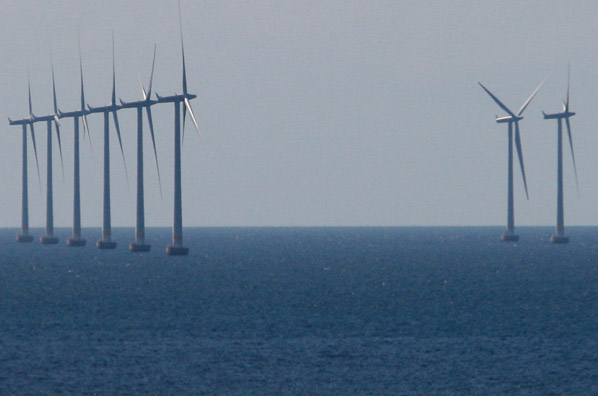
Offshore wind turbines in the Baltic Sea, visible from the Øresund
Bridge. Photo: Leif Yngve Gjerde.
|
|
Saturday 12 Februar 2022
Looking for sponsors
▲
The web-page
batlife.info reaches almost 100 unique viewers in average every day.
These are targeted bat workers who visit our pages exclusively.
We are looking to develop these web-pages
extensively, and also include a few additional web-address' we already manage.
We do not use pop-ups or other dynamic commercials on our web-pages, and hope
they will be free of this in the future.
However, we are looking for a main sponsor, and
maybe one or two supplement sponsors who manufacture or resell bat research
equipment. The sponsors will have exclusive access to promote their company and
products on our web-pages.
If you are interested, please contact us
(niff@flaggermus.no) for further
details and discussion.
|
|
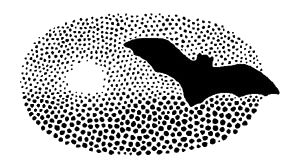
The logo to NIFF is a Northern Bat flying over the sea as the midnight
sun sets in the horizon. Drawing:
Peter Twisk.
|
|
Wednesday 26 January 2022
The European Bats Agreement is 30 years
▲
The European Bats
Agreement was signed in London on the 4th of December 1991. The Agreement
put forward a number of demands which national authorities need to implement.
The contents of the agreement does not take effect before it has been integrated
into national law and regulations.
Law and legislation both in Scandinavia and
within the EU are relatively sufficient for bat protection. Both the bats and
their habitats are relatively good protected, and there are high requirement to
Environmental Impact Assessments and follow up mitigation. However, the
European Bats Agreement has had little, if any, impact on national and local
management of bats.
Mostly, legislation in favor of wildlife is
ignored or overlooked. It is the management authorities themselves who violate
the rules, including local, regional and national level. Also institutions such
as road authorities violate the rules on a regular basis. Unfortunately, the
nature protection authorities are mostly passive and careful and withdrawn when
it comes to follow-up of the bats agreement. For instance Norway has no
Norwegian version of the agreements text for at least the ten first years of the
agreement, and the Regional Environmental Protection Agencies had not received
the agreement text. It was first in 2019 that the Norwegian Directorate for
Nature Management formed guidelines for how bats are to be treated in wind
turbine planning and construction. And still, to this date, no EIA has been
carried out in Norway on bats and wind turbines!
In connection to NIFF's 25 year jubilee, we are
now writing a booklet addressing all the violations of the agreement done in
Scandinavia. Norway reaches first place on number of serious violations, but
both Denmark and Sweden have some serious issues as well.
More
information will also be presented in future issues of
Fennoscandian Bats.
|
|

Østerild testcenter does not monitor spring migration. The northern part
of Denmark is a natural bottle-neck for spring migration of birds. However,
bats were not studied during the most important season. Photo:
Leif Yngve Gjerde
|
|
Wednesday 19 January 2022
batlife.info reach 35 000 visitors a year
▲
The Batlife Information web-page, covering European bat news and bat related
information, has so far had a relatively low visiting rate.
The people who visit these web-pages are already interested in bats, often
looking for specific information or upadting themselves with news. However, in
relation to the number of bat workers in Europe, the number of visits has so far
been constant but low.
During the
first week of January the number of daily visits reached over 100 each day.
Largest count of unique visits for one day was 119. On
an annual basis this adds up to over 35000 visits! However, the number of
visits may vary a lot between seasons, and is also influenced by bat conferences
and workshops. The actual number for 2022 will be measured at the end of this
year.
The web-statistics is an important tool to
guide future editing priorities. However, the results from the first week of
this year inspires to more frequent and updated news. At the same time we
encourage bat workers to send us your local news, reports or articles. Much of
this information is also interesting for a wider range of bat enthusiasts.
|
|

|
|
Saturday 8 January 2022
We wish
our readers a Happy New Year
▲
The past year had many challenges with the Covid-19 pandemic. Postponed
conferences from 2020 were planned for 2021. However, the pandemic was even more
aggressive during last year, forcing all physical meetings in Europe (except
Sweden) to be cancelled. On top of this we lost our two most important bat
scientists as Ingemar Ahlén and Jens Rydell both died. Travel between
Scandinavian countries has also been a challenge due to freedom restrictions.
This has affected NIFF’s fieldwork.
On the bright side, last year had a European record high of
number of bat conferences. This was because all the physical conferences were
organized «online» as web-meetings.
NIFF has now existed for 25 years, and also others
are celebrating their jubilees this coming year. I hope 2022 will strengthen the
bat work in Europe.
|
|

Leif Gjerde checking a hibernating Brown Long-eared Bat. Photo:
Lea Likozar.
|
|
Monday 20 December 2021
Welsh bat enthusiast died
▲
Tomas Peat McOwat, born on 20. October 1947, was a
Scottish artist, printmaker and naturalist. In 1974 he moved to Wales where he
has lived since. He was heavily involved in bat research, surveys, training and
promoting an awareness of bats and their need for protection.
McOwat has always been interested in wildlife and
the countryside. He had a particular interest for small mammals, and bats
especially after a meeting with Bob Stebbings in 1970.
His
web-page is still
updated by family, and has much information about his work. Also
British BCT has an interesting summery of his bat work through the years.
Tom
was a friendly, open minded and sympathetic bat
worker. He frequently attended the European
bat conferences. The illustration photo
(right) is taken during the post conference trip to the 15th International Bat
Research Conferene in Prague during August 2010. More pictures of McOwat can be
viewed at our picture gallery.
He died peacefully in Carmarthen (Southwest
Wales) on Wednesday 27. October, at an age of 74. He will be greatly missed...
|
|

Tom McOwat, Merlin Tuttle (the founder of Bat Conservation International)
and Leif Gjerde from NIFF on the post conference excurtion in Moravia,
Czechia during August 2010.
Photo: Knut Åge Storstad.
|
|
Thursday 9 December 2021
Workshop on bats and building insulation
▲
This webinar, originally addressed as a workshop,
was organized over Internet. The topics were related to necessary bat mitigation
when using lining and insulation materials in buildings. The seminar was a
contribution to implement Resolution 8.9 in the European Bats Agreement «Bats, Insulation and Lining Materials».
The Czech Bat
Conservation
Society, EuroBats
secretariat
and Ministry
of the Environment of the Czech Republic
were all hosts to the seminar. The ministry
also financed the event.
There was a
total of seven lectures, with room for several more. The seminar was extremely
interesting, covering a relatively new and little studies topic in bat research.
Several lectures presented own results on mitigation, mostly related to eastern
central Europe.
NIFF participated on the event, and information
from the lectures will be integrated in our work. The seminar is more
extensively described in Fennoscandian Bats.
|
|

Photo: Leif Yngve Gjerde. |
|
Wednesday 3 November 2021
1st
IBROS organized by the Leibniz Institute
▲
Yesterday the Leibniz Institute in Berlin organized a one-day seminar on bats
and wind energy. The webinar was addressed as the first «International Bat
Research Online Symposium», and was titled Towards solving the wind energy-bat
conflict. We expect that there are IBROS's to come in the following years.
NIFF participated in the 1st IBROS, and
the seminar will be presented in the next number of Fennoscandian Bats.
|
|
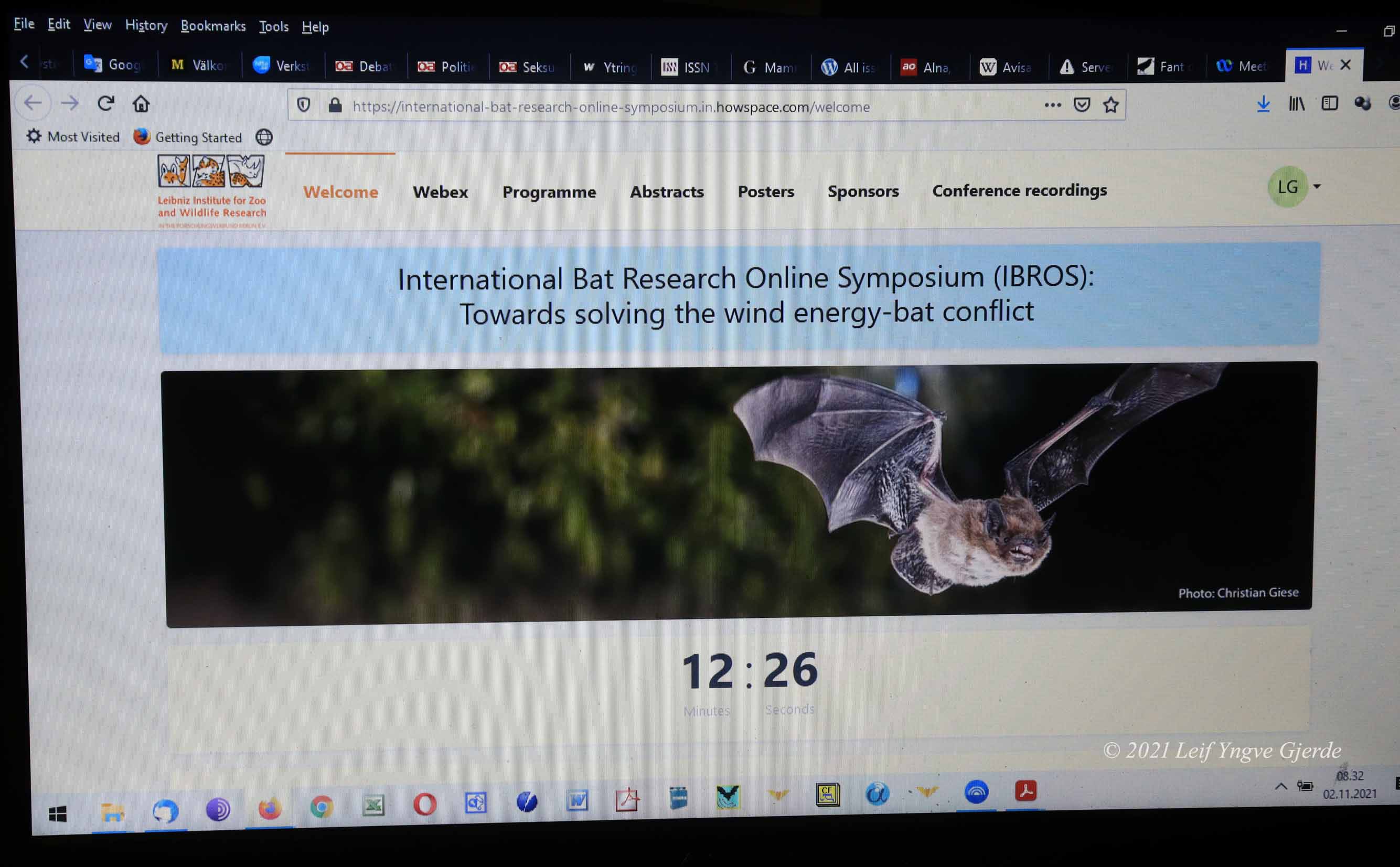
Photo: Leif Yngve Gjerde. |
|
Saturday 30 October 2021
European bat conference on hibernating bats
▲
This year seems to contain
an unusual high number of conferences. In part this is because of over-due
conferences as a result of the Covid-pandemic in 2021. With the pandemic still
ongoing in 2022, with no prospects for any end, many have decided to organize
online conferences. This has resulted in an unusual high number of seminars (webinars).
This
webinar contained exclusively lectures, and was marking the end of the Natura Viadrina +
prosject. The work was supported by EU's INTERREG VA Brandenburg – Polen 2014-2020
programme. The seminar was organized during three days (26. - 28. November) by
the Euronatur foundation. It was free for everyone to join.
NIFF participated in the webminar, and the event
will be presented in the next number of Fennoscandian Bats.
|
|
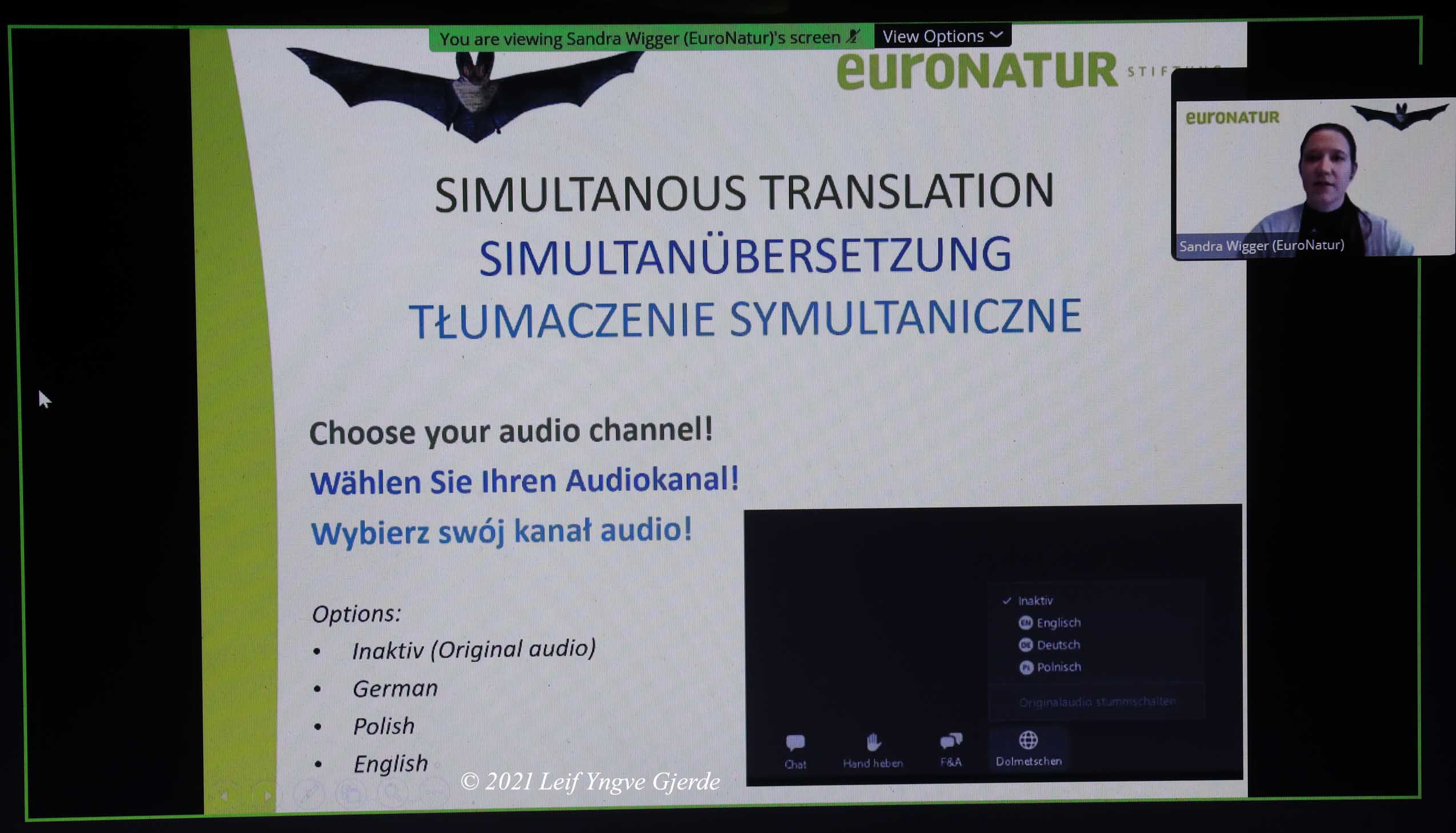
Photo: Leif Yngve Gjerde. |
|
Monday
10 May 2021
Different,
original and successful bat conference in Turku
▲
Last week, the 15th European Bat Research Symposium was organized by the
University of Turku and the Helsinki Museum of Natural History.
The conference was scheduled for last August 2020, but had to be moved to August
2021 due to the Covid-19 pandemic.
After some fuss with the choice of time, the conference was finally held from 4
to 7 May.
It was organized as an internet conference.
The
organizers had found good and functional platforms for the conference, and the
participants probably felt that this was really a
true
conference
and not just another webinar.
The conference was
carried
out
with 236 participants from 34 countries, and a number of new research results
were presented
as
posters and lectures.
This conference was characterized by the proportion of more researchers and
topics outside Europe than normal,
compared with previous conferences.
A more in-depth article about the conference can be read in the autumn issue of Fennoscandian Bats.
|
|

Photo: Leif
Yngve Gjerde. |
|
Saturday 10 April 2021
Internationally renowned bat researcher Jens Rydell has died
▲
One of the world's most renowned bat researchers, the Swede Jens Rydell, died of
a heart attack at the age of 67 on 8 April.
He grew up
in Västergötland, where for several years he was also associated with the
University of Gothenburg.
For several decades, he has
built up an international reputation for high-quality research.
He was a pioneer in several of his studies, and in recent years he contributed
significantly to research on bats and wind turbines through the Vindval project.
He was a life-time member of NIFF.
A more
in-depth article about his work can be read in the spring issue of Gudnoloddi
and Fennoscandian Bats.
He will
be greatly missed.
|
|

Jens Rydell
giving
a lecture at the Vindval conference in Stockholm 2013.
Photo: Leif Yngve Gjerde. |
|
Thursday 25 March 2021
The
International Berlin Bat Meeting
▲
The
International Berlin Bat Meeting have through the years been organized by the Leibniz
Institute in Berlin.
In average this event has been organized every two years, but was postponed from
2019 due to a conflicting event. In 2020 the
Covid-19 pandemic
postponed
the event even further. The still on-going pandemic this spring resulted in that
the Leibniz Institute did not wish to move the event yet another time. So it was
organized as a webinar.
This years online
IBBM was the sixth to be held. It was carried out during three days from
22nd
to 24th of March. It is important to keep updated on bat research and results,
so NIFF joined the webinar. The event, and some of its results, will be
presented in the next issue of Fennoscandian Bats.
|
|
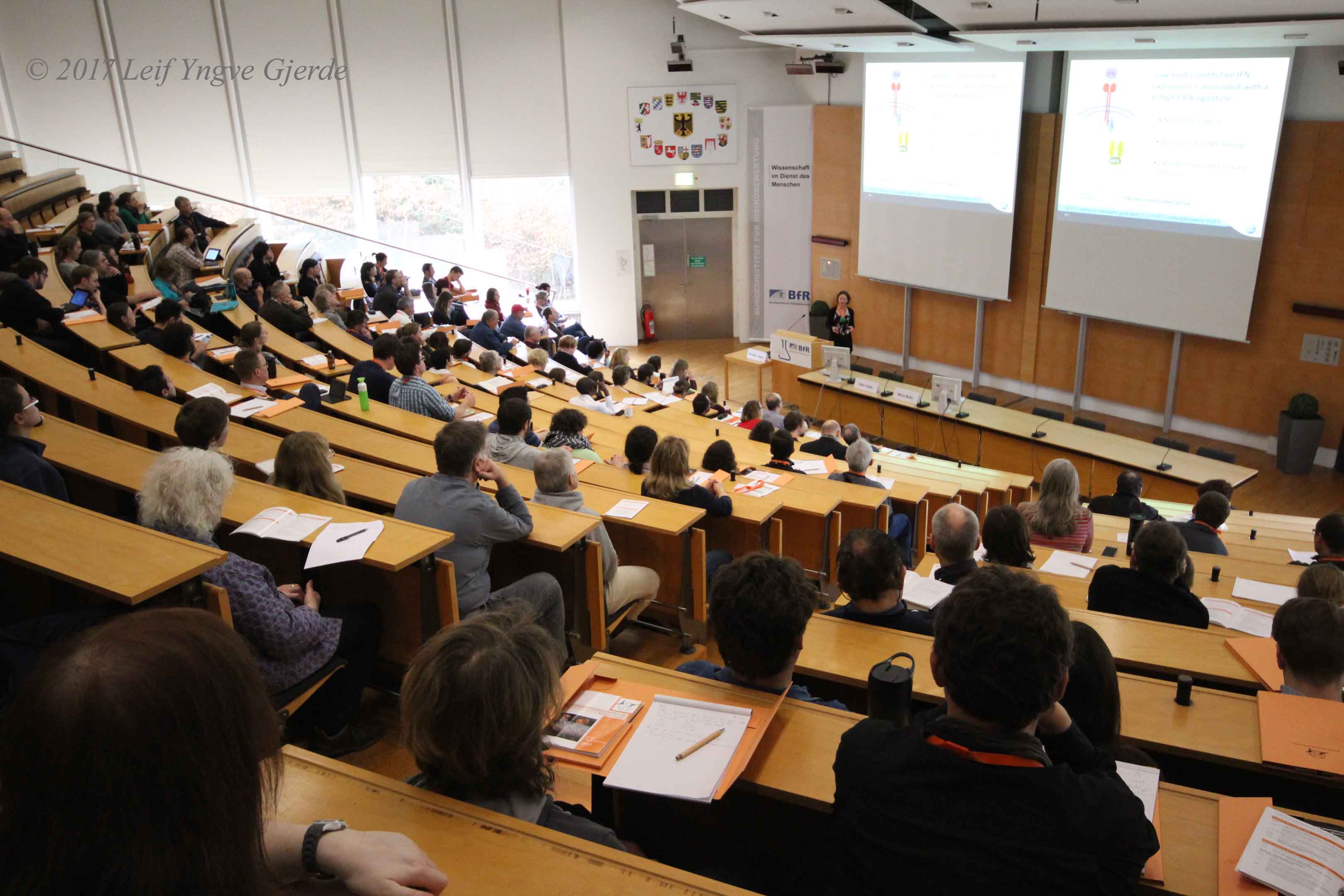
Photo: Leif Yngve Gjerde. |
|
Tuesday 23 March 2021
Titley launched the new Chorus
detector at IBBM
▲
Today Titley Scientific launched their new
detector at the International Berlin Bat Webinar (Meeting). The Chorus
detector is a weather proof device able to record both ultra- and audible sound.
It has a built in GPS and is powered by AA batteries. This means that also birds,
frogs, wolves and other audible animals may now be recorded.
The news is totally new. Titley has hidden their
cards well, not even sending out the information on their newsletters. As of
today, even their web-page do not include information about this new detector,
only allowing us to find it indirectly. Untill now Wildlife Acoustics
have been alone on the market with audible detectors, and Titley's new device is
a strong contribution to open competition.
The detector will be described in the July issue
of Fennoscandian Bats, if we are able to accuire one for testing.
|
|
 |
|
Monday 22 March 2021
November webinar:
«A global assessment of the wind energy -
bat conflict»
▲
Christian C. Voight from the Leibniz Institute
for Zoo and Wildlife Research announced at the International Berlin Bat
Webinar (Meeting) that they are planning to organize a webinar entitled
«Global
assessment of the wind energy - bat conflict». It will be a one day event,
organized on 2. November. Furter information will follow on their web page
www.leibniz-izw.de. The webinar will be in English.
|
|

Picture show Danish wind turbines.
Photo: Leif
Yngve Gjerde. |
|
Thursday 18 March 2021
EUROBATS celebrate 30th
anniversary
▲
This year it is thirty years since the European
Bats Agrement was signed. EUROBATS is the name of the administration located
in Bonn (West Germany). They function as a secretariat for the countries who
have signed the agreement.
NIFF has
started to make a summary of how the Nordic countries (Iceland excluded) have
implemented the agrrement. The results will be presented in the December issue
of Fennoscandian Bats.
|
|
 |
|
Wednesday
10 February 2021
The Swedish bat legend Ingemar Ahlén died at the age of 87
▲
Ingemar Ahlén
was born on
29th of
July 1936
in Värmland.
He was a Swedish ecologist
employed
by
the Swedish University of Agricultural Sciences (SLU) where he, among other
things.
studied bats.
He discovered in the late 1970s that bat species could be distinguished
by
their ultrasound.
He
published identification
literature in Swedish and English, and was the first in the world
within his
field.
He has since been central in mapping the distribution of Swedish bats, and
described several new species for Sweden.
In recent years he has also been involved in research on bats at wind turbines
both on land and offshore.
He has also described
migration
in Swedish bats.
Ahlén was taken from us far too soon when he died on 6 February.
Unfortunately, he contracted the Covid-19 virus which contributed to his death.
He still had a lot to do to contribute to
science.
He
will be greatly missed.
A more in-depth article about his work can be read
in the spring issue of Fennoscandian Bats.
|
|

Ingemar Ahlén
at
the Vindval conference in Stockholm 2013.
Photo: Leif Yngve Gjerde. |
|
Thursday 4 February 2021
4th EABDW in Edinburgh
has been cancelled
▲
The fourth European Alpine Bat Detector
Workshop was planned to be held in Edinburgh during September this year.
However, due to the Covid-19 pandemic, and practical issues connected to the
outbrake, the planned workshop in Edinburgh has been cancelled. We are
working on an alternative location this September, alternatively the one in
Scotland will be organized next year.
More information will click
here.
|
|
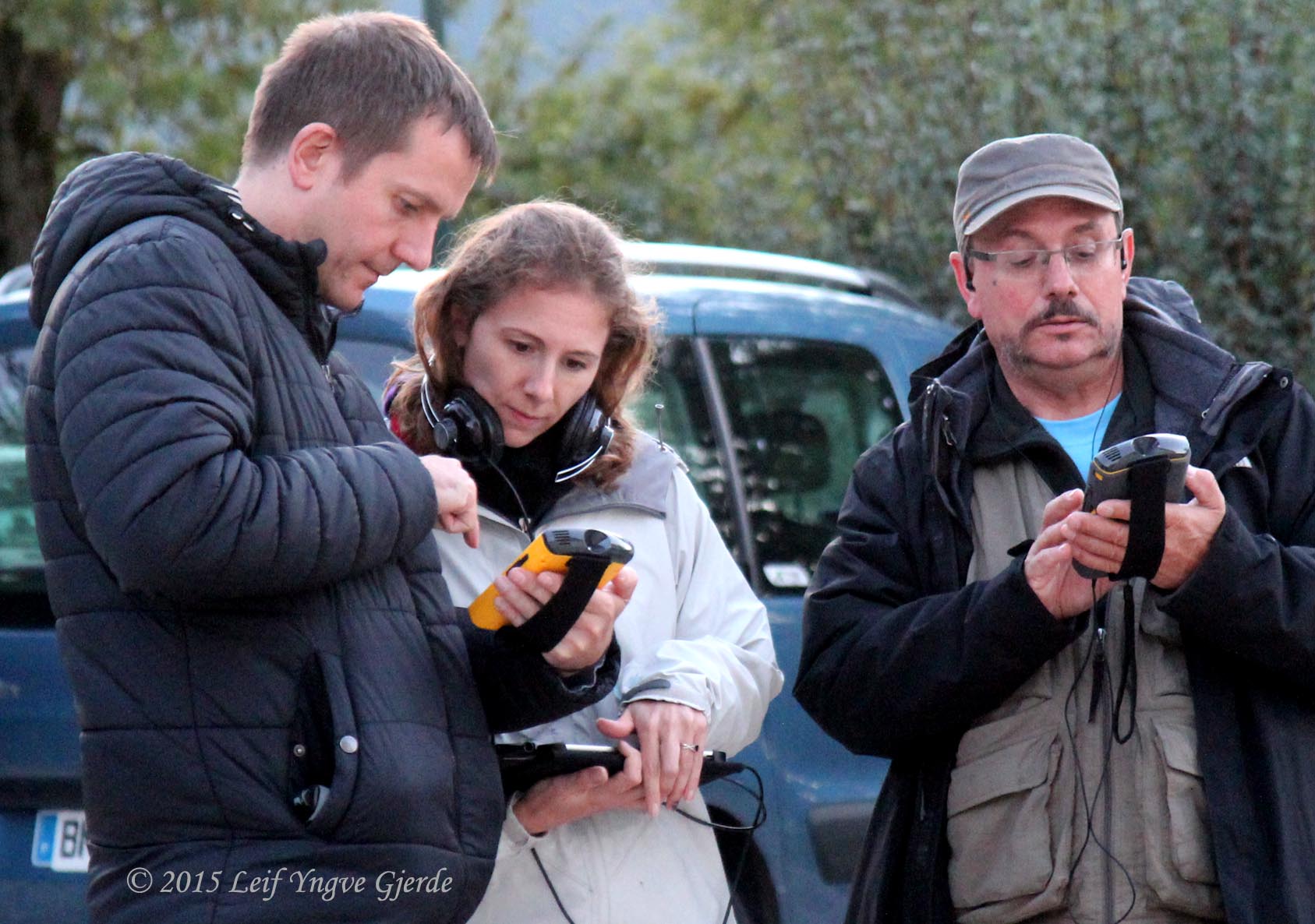
The Anabat Walkabout being tested at the 2nd EABDW in Vercors, France.
Photo: Leif Yngev Gjerde. |
|
Tuesday 19 January 2021
11th European Bat Detectors
Workshop has been cancelled
▲
Due to the European Bat Research Symposium
in Turku (Finland) has been cancelled, there is no point in organizing the
workshop.
Since the first workshop (EBDW) in the
Netherlands was organized in 1991, these workshops have always been organized in
connection to the European Bat Research Symposium. Organizing the
workshop just prior or after the symposium allows people to combine their
travel. Furthermore, the workshop functions as an extention of the symposium.
The next workshop will be held at the next
European Bat Research Symposium, given that the EBRS is not organized as a
webinar.
|
|
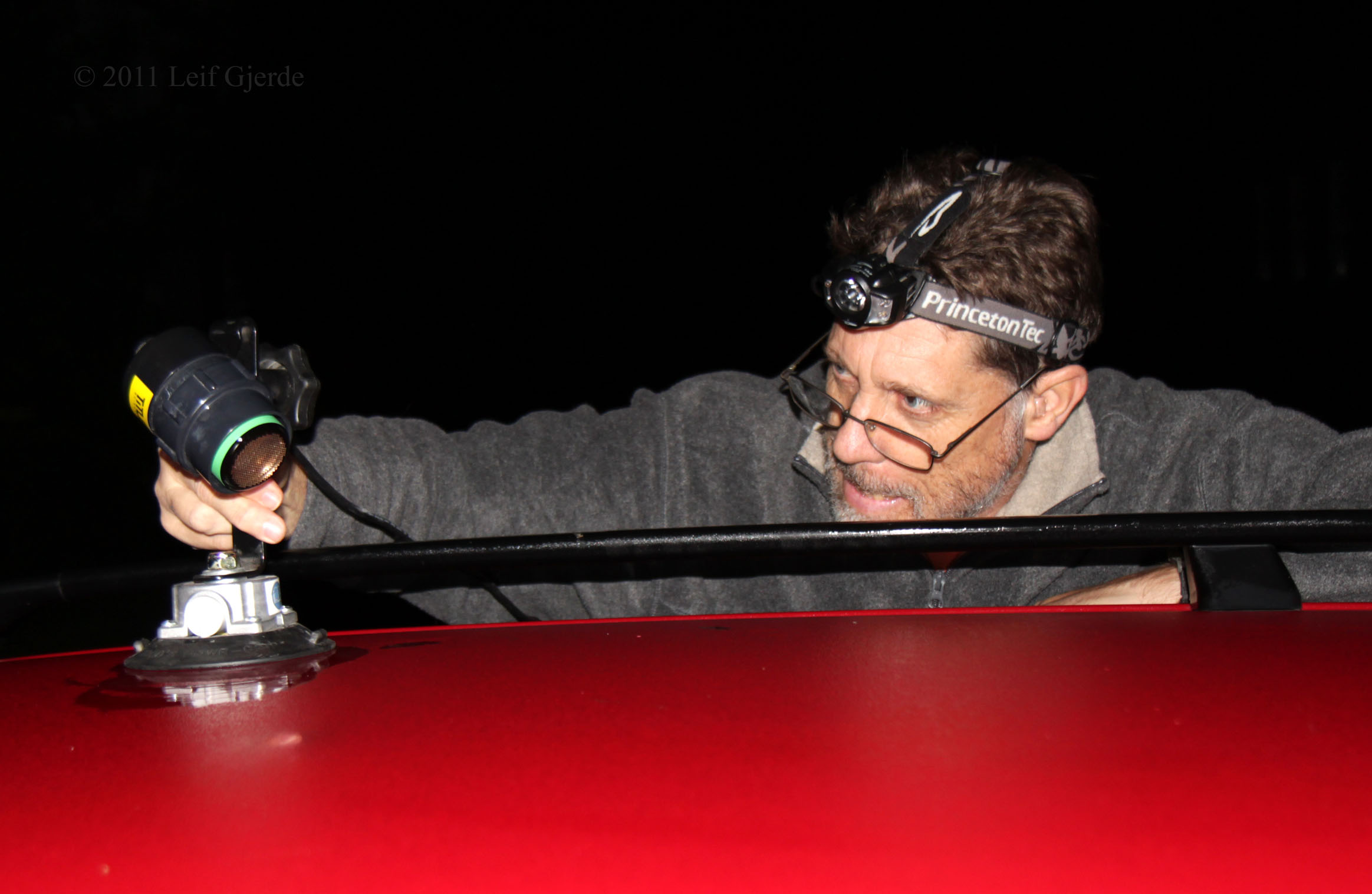
Chris Corben at the 8th EBDW in Aukstadvaris (Lithuania) during August
2011. Photo: Leif Yngve Gjerde. |
|
Friday 8 January 2021
Wildlife Acoustics launch new passive
detector
▲
Today, Wildlife Acoustics
announced their new detector the Song Meter Micro will be for sale from
March. It is not launched as a «new generation» detector, but rather the «next
in line», supplementing their SongMeter 4 Bat and SongMeter Mini Bat
detectors.
The SM Mini Bat seems to be a short lived
detector. Microphones are always the weakest link concerning detectors due to
its short life expectancy (1-3 season). With this built into the detector, this
limits the detectors overall lifespan. Furthermore, the warranty is only for one
year (shorter then the 3-year EU regulated warranty), indicating the
manufacturer have low expectations of their product. Otherwise the detector is
based on Bluetooth 4.0 communication to enable operations, a feature that will
good for some users and an obstical for others.
Earlier it was the competition between the
manufacturers Wildlife Acoustics and Titley Scientific that cut
the market prices of mass produced detectors. Today there is becoming more
evident that cheap «home made» detectors such as the CloudedBats (WURB) detector
or the BlueBox detector might be just as good, and a better alternative for the
consumer. The cost of these two detectors are 500 and 160 euro. It is evident
that Wildlife Acoustics have tried to meet this competition by producing their
own alternative low-budget detector. Its real cost is around 345 US dollars (batteries
and SD card excluded).
The Song Meter Micro detector will be
presented in the next number of Fennoscandian Bats, where we also hope to
include some test results.
|
|
 |
|
Tuesday 5 January 2021
European Bat Research Symposium 2020/2021 cancelled
▲
Due to the COVID-19 pandemic and uncertainties regarding its
development this year, the symposium organizers have decided to cancel the
conference. There is uncertainties
weather the next conference will be in 2023 or 2024.
The organizers have decided to replace the conference with a webinar. It
will be organized on 4th through 7th of May, just after the other European
webinar (organized by Leibniz Institute) has been finished. This means that two
events, which traditionally have been complementary, now have become competitors
due to the poor timing.
For more information
and updates on the webinar check their web page
www.ebrs2021.fi.
|
|
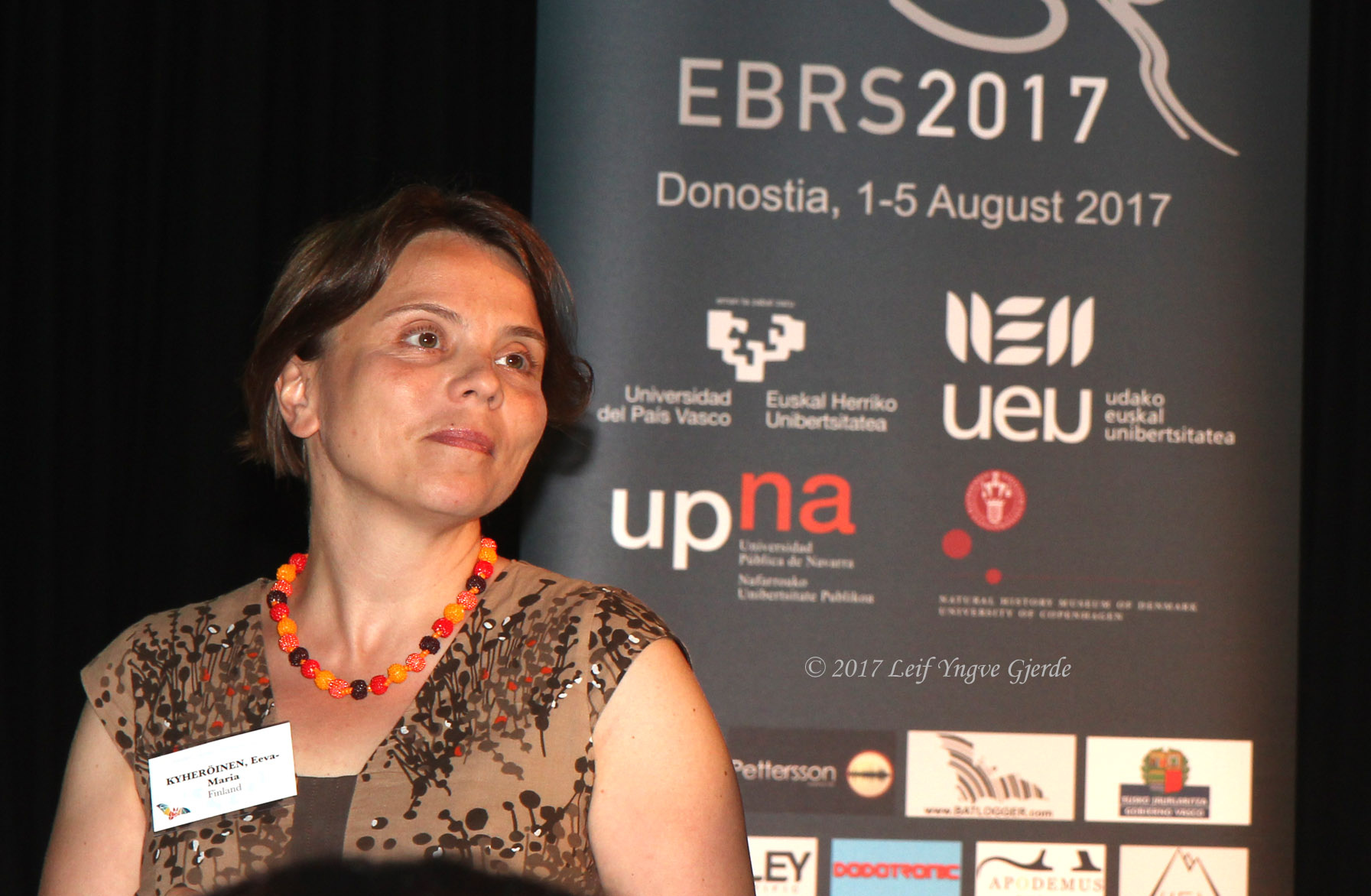
Photo: Leif
Yngve Gjerde. |
|
Wednesday 9 December 2020
First Danish
wind turbine project ever to be legally stopped due to bats
▲
A
wind turbine project
at Nørrekær Enge, just
south of Limfjorden in
Denmark, has
included the planning of 36 new wind turbines to the existing ten.
The area is close to a Natura 2000 area in
which the
presence of Pond
Bats is one of the
reasons the area has been designated special protection.
A legal committee has withdrawn the construction permit
given by the two municipalities involved. The reasons for the withdrawal is that
(1)
The environmental
report (EIA)
is based on incorrect assumptions about the
Pond
Bat's way of flying
and (2)
The bat
survey
made in the area as a part of the EIA, has been insufficient
given the size of the project area and the location close to the Natura 2000
site.
The owner of the
project is the energy company Vattenfall, which is 100% owned by the Swedish
government. They have trough the project Vindval developed methodology on how to
carry out EIA at wind turbine projects. This work is extremely extensive, going
on for around 10 years. However, these standards Vattenfall has not applied on
their own project abroad.
More information will be available in the next
number of Fennoscandian Bats.
|
|

The first EIA on bats and wind
turbines in Denmark was carried out by Naturopa Consultancies for Just Wind A/S
at Barløse in Assens. Photo: Leif Yngve Gjerde. |
|
Thursday 6 August 2020
Wind farm
project stopped in Brittany by French court
▲
The French
web site Ouest France reported on 4 August that
the Rennes
administrative court has just cancelled the decree of 20 November 2017 which
authorized the construction of a wind farm on the border between Caro and
Monterrein, near Ploërmel (Morbihan).
The decision was made by
the court on 30 July, overturning an earlier construction permit. The
construction of 8 turbines, reaching 178 meters in height, has now been stopped
due to high biodiversity of bats.
A total of 16
species had been recorded, and the court agreed that the risk of bat mortality
was too high. The wind turbine company’s plan for preventing excessive mortality
and monitoring was not sufficient.
|
|

Picture show Danish wind turbines.
Photo: Leif
Yngve Gjerde. |
|
4 July 2020
IUCN wish to protect bats from
human-spread Corona-virus
▲
On 12th
April the IUCN Bat Specialist Group issued recommendations around the suspension
of bat fieldwork, where handling bats or entering roosts was involved. The IUCN
recommendations were issues to reduce any possibility of transmission of the
COVID-19 virus (SARS-CoV-2) from humans to bats. At this time there is a high
level of uncertainty about the likelihood of such transmission being possible.
The recommendations apply the precautionary principle whilst a group of
researchers are undertaking rapid risk assessments and we hope they will share
their findings as soon as these are available for each global geographic region
(they are starting with North America).
(Source: British BCT)
|
|

|
|
30 June 2020
New
European bat species discovered
▲
The
Gaisler’s Long-eared Bat Plecotus gaisleri has now been recognized as a
European bat species, with a limited distribution in the Mediterranean basin.
Published material based on field surveys and molecular analysis has now
confirmed the species to occur in Italy (Pantelleria) (Ancillotto et al.
2020) and the islands of Malta and Gozo (Mifsud & Vella 2019).
This species was described in 2004 using a specimen from
north-eastern Libya. It was then dedicated as a subspecies (Plecotus
teneriffae gaisleri) to the Canary Long-eared Bat. Earlier this subspecies
has been associated to the Brown Long-eared Bat and then the Grey Log-eared Bat.
Last it was placed as a subspecies to Mediterranean Long-eared Bat, before it
was acknowledged as a separate species.
|
|

A Brown Long-eared Bat in a Norwegian church..
Photo: Leif
Yngve Gjerde. |
|
Saturday 2 May 2020
International renowned bat scientist Thomas Kunz died at age 81
▲
Thomas Henry Kunz,
distinguished biologist and Boston University Professor, passed away on 13th of
April at the age of 81 due to complications of COVID-19. He had since 2011 spent
his time at a nursing home due to brain injuries from a car accident while he
attended a conference in Toronto.
Kunz joined the faculty in
the Department of Biology at Boston University in 1971. His research focused on
the ecology, behavior, evolution, and conservation biology of bats. He is the
author or co-author of more than 280 publications, and edited or coedited six
books on the biology and ecology of bats. He was also involved in organizing the
10th International Bat Reserach Conference held
in Boston during 1995. The professor was, perhaps, most productive at the age of
73 in 2011, when he coached seven PhD students and active grants from six
different agencies.
If you wish to honor Kunz,
you may do so by a donation to the Tom Kunz Endowed Biology Fund. You can
find more information
here.
You can read about his
biography at
Bosten University.
His
obituary tells about his life and accomplishements, as well as
Wikipedia.
Best of memories...
|
|

Thomas Kunz on the field trip during the 10th European Bat Research
Symposium in Galliu, Ireland.
Photo: Leif
Yngve Gjerde. |
|
Tuesday 28 April 2020
European Bat Detector Workshop has been postponed
▲
The
Corona pandemic, and all the society restrictions it has caused, has resulted in
that 15th
European Bat Research Symposium in Finnish Turku has been postponed till August
next year.
This means that the 11th European Bat Detector
Workshop will also be postponed.
This is organized by NIFF,
and
starts
directly after the symposium in Turku.
|
|

Chris Corben at the Bat Detector Workshop in Lithuania. Photo: Leif Yngve Gjerde. |
|
Tuesday 28 April 2020
EBRS 2020 postponed to 2021
▲
Due to the COVID-19 epidemic and many uncertainties regarding the
developments in the next few months, the conference organizers decided Thursday
last week to
postpone 15th European Bat Research Symposium until 2021.
The new dates are
2. to 6. August 2021.
For more information
and updates check their web page
www.ebrs2020.fi.
Pictures from previous
EBRS
meetings may be viewed
here.
|
|

Photo: Leif
Yngve Gjerde. |
|
13 March 2020
6th International Berlin Bat
Meeting has been cancelled
▲
The Leibniz Institute for Zoo and Wildlife Research
originally planned on organizing
the 6th International Berlin Bat Meeting during 23-25 March 2020.
Unfortunately it has now been cancelled due to the spread of the Corona virus
(SARS CoV 2) which may give the desease COVID-19.
Christian C. Voigt and
Tanja Straka announced today in an e-mail:
«We
regret to inform you that we had to postpone the upcoming
6th
International
Berlin Bat Meeting: The human perspective on bats
due to the pandemic spread of SARS CoV 2. We are no longer allowed to host
conferences in Berlin at this point. We envisage having the conference in March
2021.»
For more information
and updates check their web page
www.batlab.de.
Pictures from previous
meetings may be viewed
here.
|
|

Christian C. Voigt during the meeting in 2015. Photo: Leif
Yngve Gjerde. |
|
Saturday 15 February 2020
Neil Middleton publish milestone book
▲
The new book
"Is that a bat?" describes sounds we can detect on an ultrasonic
detector. That is, all sounds, except those from the bats themselves. There is
still a lot of lack in
knowledge about the bats'
ultrasound. Traditionally we have
focused on the animals' search
calls,
feeding buzzes
and commuting calls.
This has been the case
since the 1980's.
But, for example, the animals' social sounds have
generally
been ignored. This could be
males marking territories, or animals arguing in the air.
Social bat calls
were
first highlighted as late as 2014,
when Neil Middleton published his
book on this topic.
So far, Middleton is alone on
publishing such a book.
However,
Neil Middleton has made
another step. He has
now included all sounds, except bats, in his new book. This is of course very
useful, since almost as often we come across sounds we cannot identify.
Amphibians, birds, grasshoppers and small rodents can all emit ultrasound on a
regular basis. Several of these sounds are species specific. In addition, a
number of mechanical sounds
may find its way to the detector.
All of this can cause confusion when we
try to identify our recorded sounds.
So the knowledge Middleton conveys in his latest book is absolutely useful to
any bat scientist.
The book is for anyone who works actively with bat sounds, and is strongly
recommended. It should be a permanent
inventory
of any library dealing with bats.
The book was published in January, and NIFF was sent a copy by the author
this week. NIFF has been mentioned several times, including from the Askim
workshop in 2018. More on this comes in the book review which will be included
in the next
issue of Fennoscandian Bats.
|
|
 |
|
Saturday 8 February 2020
Bat trips
to see hibernating bats at Mønsted Limestone Mines
▲
In
the late 1990s Mønsted started
with
guided tours to see hibernating bats
during February.
They offered people tours on both Saturday and Sunday during both winter holiday
weekends. These tours were very popular and 50-150
people
participated on
each tour.
However, winter is a vulnerable time for bats
since they are in hibernation.
Disturbances
may
significantly reduce the bats'
possibility
for
survival, and thus
such activity has generally
been taboo. Most
serious researchers have rejected
such activity. It was therefore controversial when Mønsted started with
guided tours during
winter. Although
only a limited part of the mines are
visited, and where
relatively few bats have been found, many
people have
been critical to this practice.
When
Mønsted opened
for winter tours, this inspired other
less serious companies to start guiding as well.
However,
studies from both Mønsted
and Thingbæk show that, despite human winter visits, the number of
hibernating
bats have
increased over the years.
Mønsted
limestone mines have two daily tours of the mines during the entire Danish
winter holidays.
|
|

Over 18.000 bats hibernate in the mines at Mønsted in Danmark. Foto: Leif
Yngve Gjerde. |
|
Friday 31 January 2020
11th
European Bat Detector Workshop to be organized in Finland 2020
▲
The European Bat Detector Workshop was first organized in
the Netherlands during 1991. Since, this workshop has been organized in
connection to the European Bat Research Symposium (either just before, or
after). This year the 15th European Bat Research Symposium will be organized in
Turku during 3-7 August (check our meeting calender at
www.batlife.info/meetings/).
So it is the pleasure of
the Nordic Chiroptera Information Center (NIFF) to invite you to the 11th
European Bat Detector Workshop, which will be organized in Kausala, 133 km
east of Helsinki.
The five day (four night) workshop will include
peer-reviewed oral presentations, posters, workshops, and sessions for
exchanging experience in field practices.
The aim of the
workshop is to get field training in practical bat work, especially the use of
various models of both passive and active bat detectors. This will improve our
training and knowledge of the latest technology and experience on field
identification of flying bats. The mixture of novice and well experienced bat
workers (and everything between) enhances the learning process by self awareness
and development.
For more information check our web site
www.ebdw.eu.
|
|

An Anabat passive detector with weather box. |
|
Friday 29 November 2019
New «handbook» include all the
bats in the world
▲
Volume 9 of the Handbook of Mammals of the World is the latest issue
in
a book series containing
all the
mammals
in the world.
The latest
and last
volume addresses all the
so far
1,400 known
species on our planet.
Each species is covered with text, maps, illustrations
and references. According to Lynx publisher, the
information should be updated, but NIFF has information that a lot of key
knowledge might
not be
included.
Still, the book is the most comprehensive work on our bats
ever
published.
NIFF has received a copy
to be
reviewed.
The
book
review
will appear
in the next issue of Gudnjoloddi and Fennsocandian Bats.
|
|
 |
|
Thursday 31 October 2019
Bird species of the Eurasian steppes will reveal the origin of
the Party-colored Bat
▲
The geographic origin
of the Party-colored Bat (Vespertilio discolor) has so far been unclear.
It has always been presumed that they originated from the steppe regions of
South-eastern Europe, north of the Black Sea and the Caspian Sea. Furthermore,
it was presumed they foraged in grassland during summer, followed by mating
activity and hibernation in mountain areas containing cliffs.
A new literature study has as objective to review
bird species with similar ecological and habitat requirements as the
Parti-colored Bat. This study might shead some light to the mystery that has
followed this species since the 1800's.
The study is being carried out by Leif Gjerde
from NIFF.
|
|
 |
|
31 July 2019
Wildlife Acoustics discontinues
the SongMeter 3
▲
The USA based
manufacturer Wildlife Acoustics recently announced that from July 2019
their second generation of passive detectors, the SongMeter 3, will be out of
production. The SongMeter 3 was originally launched in May 2014 as a new
generation of the perfect detector. It was developed based on the experiences
from the SM2 detector. However, the SM3 was considerably more expensive and a
lot heavier. The size and weight made it impractical for field use. The SM3
lasted only five years.
|
|
 |
|
Tuesday 25 June
2019
Increase in
number of hibernating
bats in Swedish mines due to climate change?
▲
During
1980 to 2017, hibernating
bats were montored
at three abandoned mines in
southern Sweden.
Taberg and Kleva mines each have around 1.5 km of accessible
passages. Here, a maximum of 517 (Taberg) and 132 (Kleva)
bats are recorded, divided
on
6 species.
Ädelfors is a small mine with only a maximum of 22 individuals.
The number has been constant for
the Daubenton Bats
and Brown
Longeared Bat.
In contrast,
Wiskered Bat,
Brandts' Bat
and Nathusius' Bat
have increased greatly in numbers.
The
Northern
Bat
have
shown a significant but weak decline.
The same
trend for the same species has also been demonstrated in continental Europe and
the British Isles. This indicates that there is a common
cause for the changes in species populations.
The authors
are bold enough to suggest that there are climate changes that
might
cause the changes, without any
further
evidence of this.
Source:
Jens Rydell, Johan Eklöf, Hans Fransson, and Sabine Lind. 2018. Long-Term
Increase in Hibernating Bats in Swedish Mines — Effect of Global Warming?
Acta Chiropterologica 20 (2), 421-426. ISSN
|
|
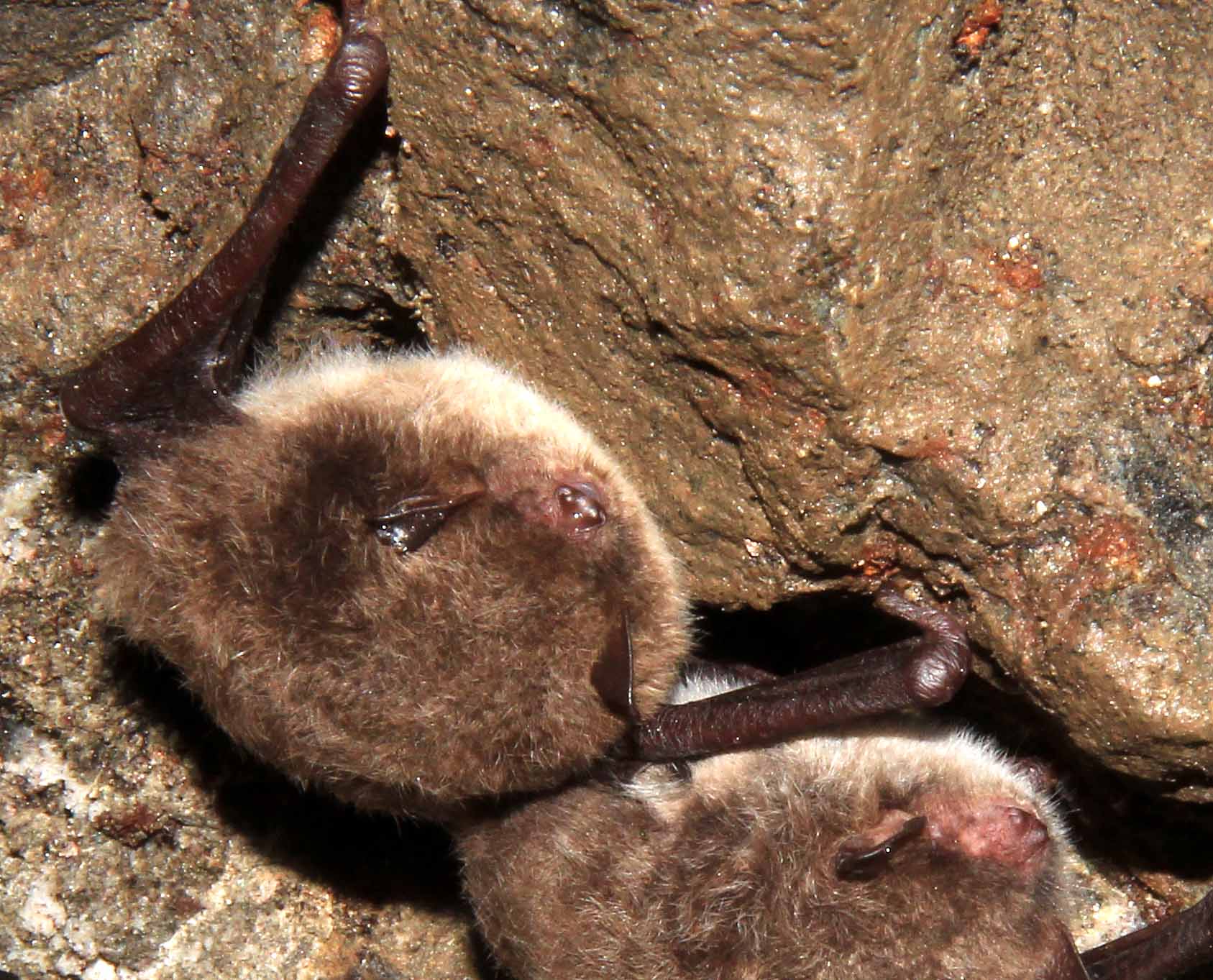
Daubentons Bat inside Romsåsen mines. Photo: Leif Yngve Gjerde. |
|
5 May
2019
6th International Berlin Bat
Meeting to be organized in March 2020
▲
The Leibniz Institute for Zoo and Wildlife Research is organizing
the 6th International Berlin Bat Meeting during 23-25 March 2020.
With this conference, Christian C. Voigt and
Tanja Straka would like to foster an exchange of ideas related to «human
perspectives on bats». Registration will open early summer. For more information
and updates check their web page www.batlab.de.
Pictures from previous
meetings may be viewed
here.
|
|

Christian C. Voigt during the meeting in 2015. Photo: Leif
Yngve Gjerde. |
|
13
December
2018
New bat detector: Titley
Scientific launches the Anabat Scout
▲
Our
two large manufacturers seem to go separate ways in regards to developing new
detectors.
While the USA
based firm Wildlife Acoustics are discontinuing their production of active
detectors for field use, the Australian firm Titley Scientific have chosen to
launch yet another active detector for fieldwork. Three years ago they launched
«the Walkabout». And this November a new detector was
announced, ― the Anabat Scout.
The Anabat Scout is a simpler model
compared to the Walkabout, but also at a lower cost. It records in full
spectrum, and include heterodyne, auto-heterodyne and frequency division. A
built in GPS enables to use it for transects, since the recordings and GPS are
both time-stamped. An interesting feature is the inclusion of a bat counter.
Sounds of emerging and returning bats can be time stamped by two separate
buttons. This is a useful tool when counting emerging bats at colonies. Titley
Scientific have been creative when developing this detector, making them the
first manufacturer with this feature on a detector.
|
|
 |






































































